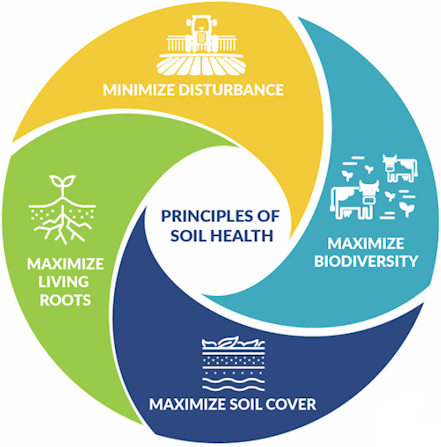Soil Health
 It's all about the function of the soil. Healthy soils have many benefits that not only help protect the environment but also improve crop production. Soil is the engine that helps produce food, fuel, and fiber; the health of the soil matters. Soil health includes three main aspects: chemical, physical, and biological. Historically farmers have focused on the chemical and physical properties of soil, with little information available on biology. Without addressing the soil biology, it's difficult to have healthy soils.
It's all about the function of the soil. Healthy soils have many benefits that not only help protect the environment but also improve crop production. Soil is the engine that helps produce food, fuel, and fiber; the health of the soil matters. Soil health includes three main aspects: chemical, physical, and biological. Historically farmers have focused on the chemical and physical properties of soil, with little information available on biology. Without addressing the soil biology, it's difficult to have healthy soils.
When all three aspects of soil health are addressed collectively, the soil can improve overall water holding capacity, allow for better infiltration, improve nutrient cycling, increase soil aggregation, reduce compaction, improve trafficability, better filter pollutants, and more. Image courtesy USDA-NRCS.

